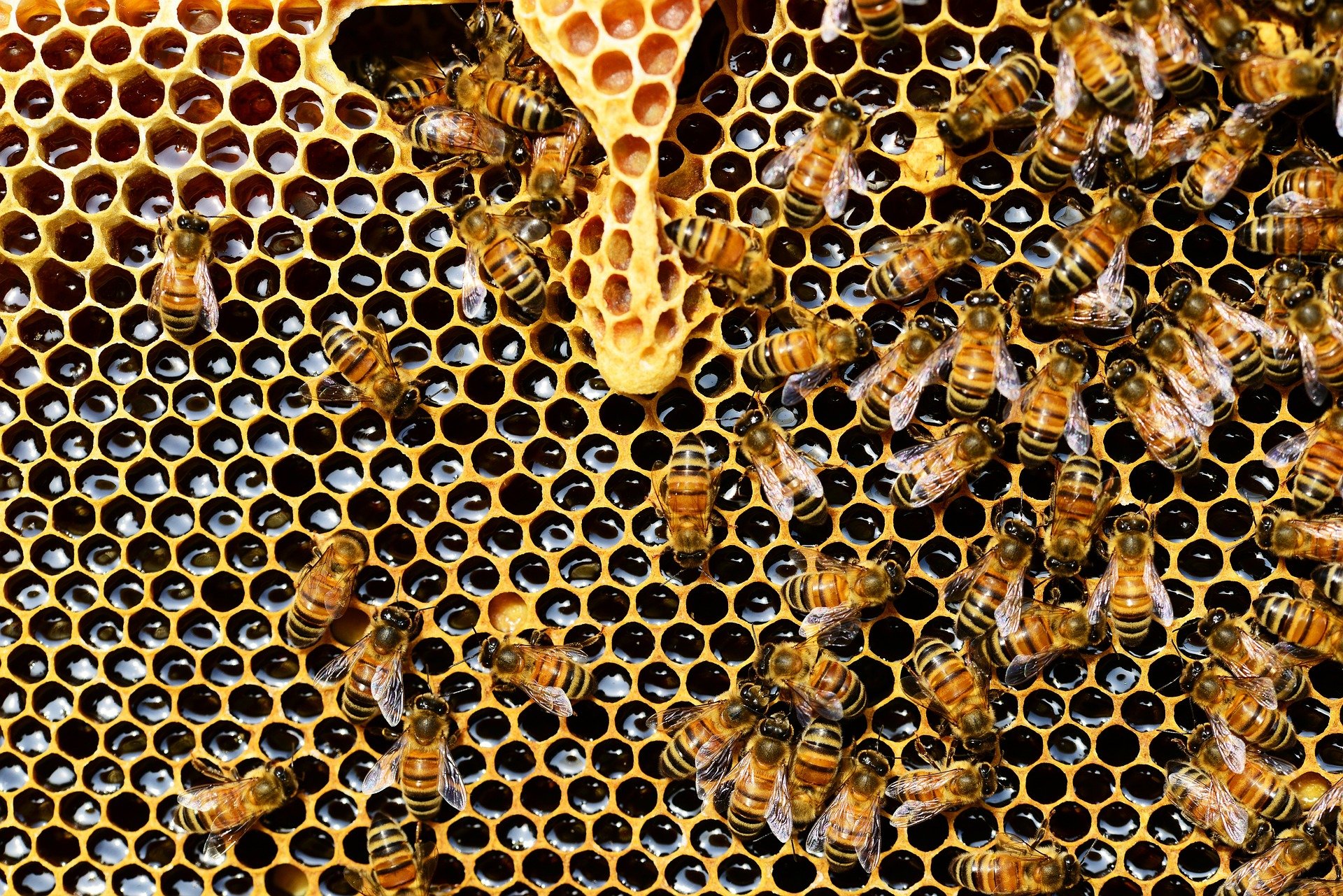As the world’s native bee populations are declining, crop production requiring pollinators increasingly relies on commercial pollination services. In the U.S., the beekeeping industry is in great demand, and truckloads of bee colonies travel the country to accommodate crop growers. A new study from the University of Illinois Urbana-Champaign looks at pollination contracts between beekeepers and California almond growers, exploring clauses that could make the agreements more appealing for both parties.
The work is published in the journal Ecological Economics.
“There’s about 1.3 million acres of almond trees in California, and each acre requires two honey bee hives for pollination, so that’s about 2.6 million honey bee hives every year. They are coming from all over the U.S., making the trek to get there by February 15 when the almonds usually start blooming, and they stay for about a month,” said Brittney Goodrich, assistant professor in the Department of Agricultural and Consumer Economics, part of the College of Agricultural, Consumer and Environmental Sciences at Illinois. Goodrich is the corresponding author on the paper.
Around 90% of the country’s commercial bee colonies congregate in California for almond bloom. The bees spend the rest of the year elsewhere, many in North Dakota or South Dakota for honey production in the summer, and in Texas or Florida during the wintertime.
“You can think of commercial beekeepers as livestock producers who engage in rotational grazing, moving colonies to the places where there are flowers blooming so the bees can find food. I’m interested in how beekeepers deal with risk in their operation and how that affects pollination contracts,” Goodrich said.
Native bee populations are threatened by pesticide use, diseases, and pest problems, as well as monoculture crops and decreased native forage land, leaving crop growers to depend on managed insect pollination.
“We wanted to explore whether contracts can include elements that make them more appealing to beekeepers, and whether they would be willing to accept a price discount in exchange for these features. We specifically looked at protection against pesticide exposure, bee-friendly cover crops, and prepayments,” Goodrich explained.
The researchers conducted an online survey with commercial beekeepers who had participated in almond pollination. Respondents were asked to consider a standard contract with a typical pollination fee of $200 per hive, as well as two alternative contract options with different clauses and prices, then choose which one they preferred. Each respondent made eight contract selections, each time choosing from three contract options. Based on these responses, the researchers were able to estimate the value of each clause.
They found that the pesticide protection clause was the most highly valued, followed by two of the cover crop options. The results were primarily significant for beekeepers who were more risk-averse and those who had previous experience with pesticide exposure.
“Usually, fungicides aren’t harmful to honey bees, but they can become synergistically toxic if they are mixed together. We included a contract clause specifying that growers would not tank mix fungicides, and they would only apply at night, when honey bees aren’t foraging, so the risk of exposure is low,” Goodrich said.
Overall, beekeepers were willing to accept an $8 discount per colony for pesticide protection, which is about 4% of the total pollination fee per the standard agreement.
“That may not sound like much, but when the average size of the beekeeping operations we surveyed was 5,700 colonies, it adds up quickly,” Goodrich noted.
The beekeepers also valued the presence of flowering cover crops, which can provide additional nutrition that makes the bees more capable of dealing with pesticides, benefiting native bees as well as honey bee colonies. The survey included three cover crop options: clovers, a brassica mix, and a soil builder crop featuring a mix of legumes, brassica, and grasses.
The brassica mix was valued at about $6 per colony, while the soil builder mix was slightly lower. Clovers are typically beneficial for bees, but they bloom later in the season where many of the bees have already left almond orchards, so this option held little value for the beekeepers.
“These results are encouraging, because cover crops can also provide soil health benefits for almond growers. However, there are often water shortages in California due to droughts, and growers typically have micro-sprinkling systems that only reach the almond trees. There is a risk of paying for cover crop seeds which may not get enough rain to germinate,” Goodrich stated.
That’s why discounts on pollination fees can help alleviate additional costs to plant cover crops and modify pesticide schedules, making these practices more palatable for growers.
The survey also showed that beekeepers value a 40% prepayment before they arrive in California, providing a guaranteed income and working capital to transport the colonies and get them ready for pollination. Goodrich said this is a good option for growers who can afford to pay an upfront fee.
“Our findings show that farmers of pollinated crops can include features that will make pollination contracts more attractive to beekeepers. Maybe it won’t necessarily lead to a discount, but it might lead to attracting a beekeeper to your farm that you weren’t going to get otherwise,” Goodrich stated
“For beekeepers, this information can provide suggestions for contract negotiations, such as accepting discounts for pesticide protection, cover crops, or prepayment. It helps to know there are ways to obtain mutually beneficial arrangements.”
More information:
Marieke Fenton et al, Measuring beekeepers’ economic value of contract enhancements in almond pollination agreements, Ecological Economics (2024). DOI: 10.1016/j.ecolecon.2024.108351
Provided by
College of Agricultural, Consumer and Environmental Sciences at the University of Illinois Urbana-Champaign
Citation:
Honey bees in demand: New contract strategies to support pollination services (2024, October 15)
retrieved 16 October 2024
from https://phys.org/news/2024-10-honey-bees-demand-strategies-pollination.html
This document is subject to copyright. Apart from any fair dealing for the purpose of private study or research, no
part may be reproduced without the written permission. The content is provided for information purposes only.

